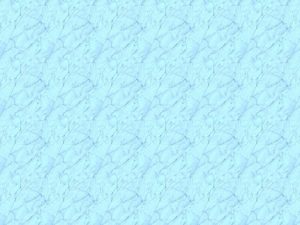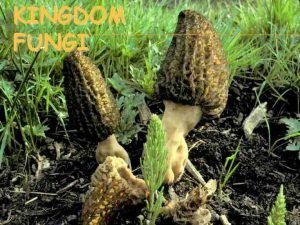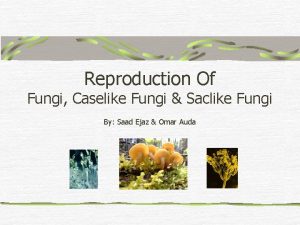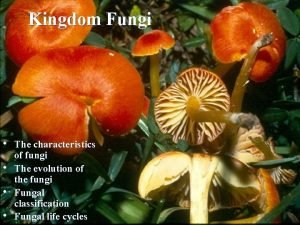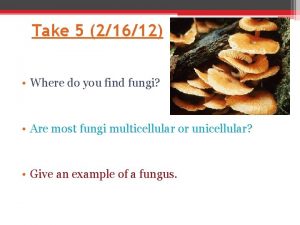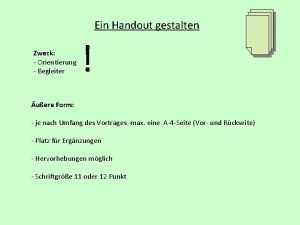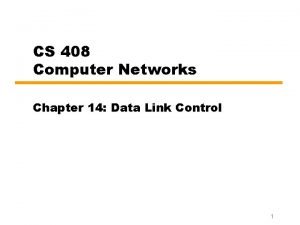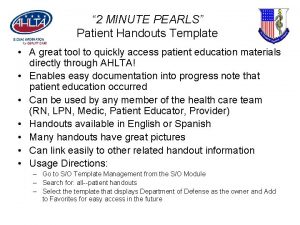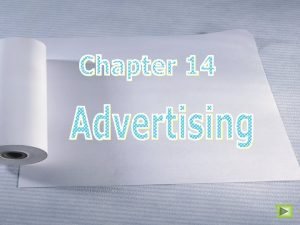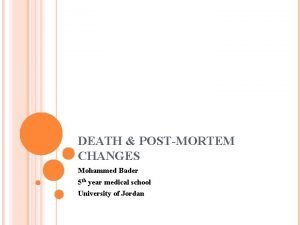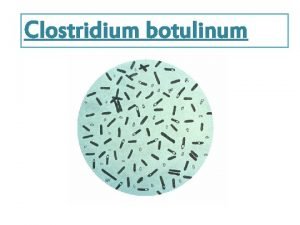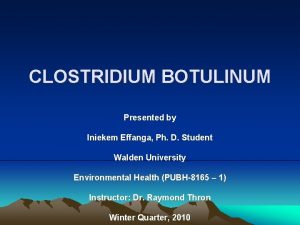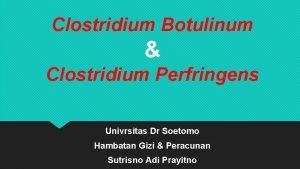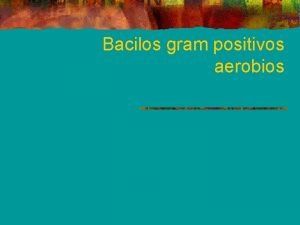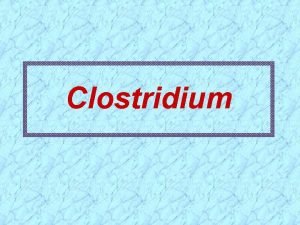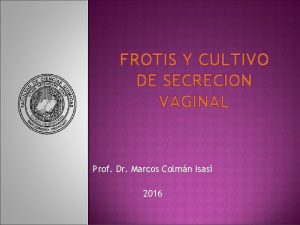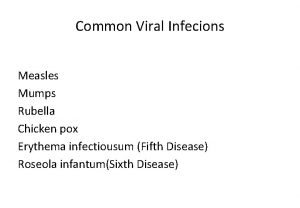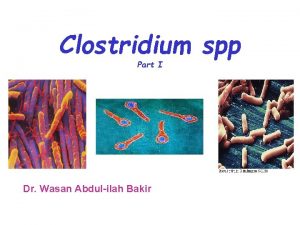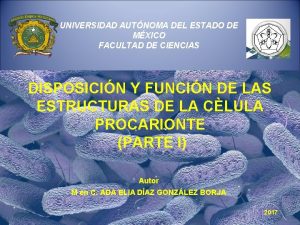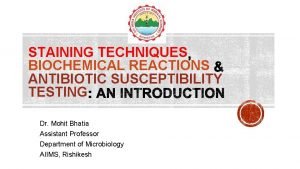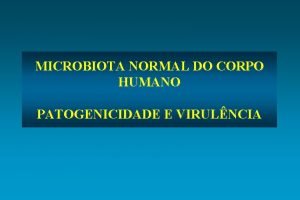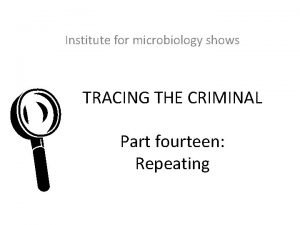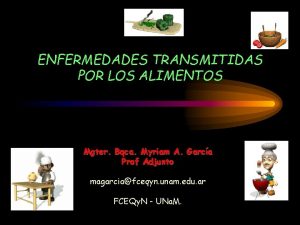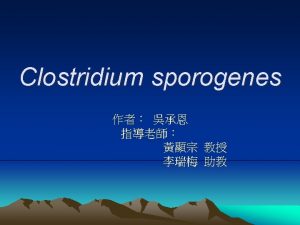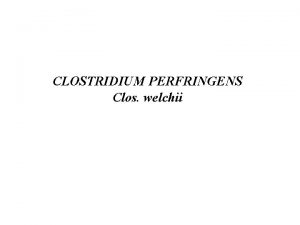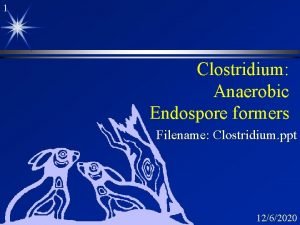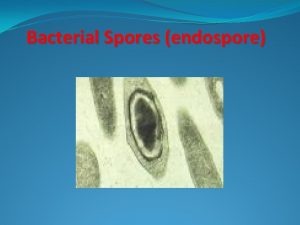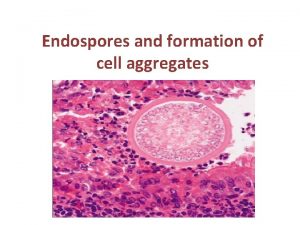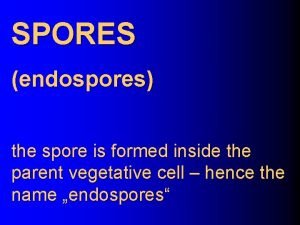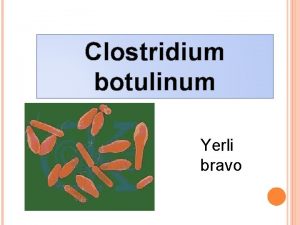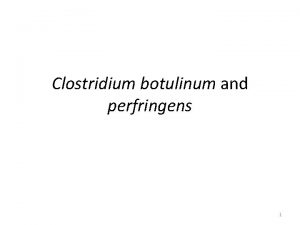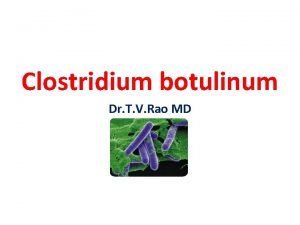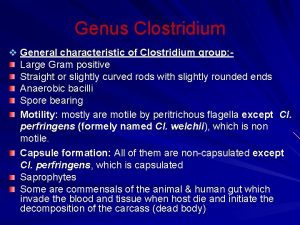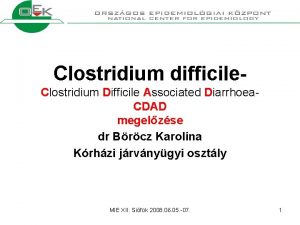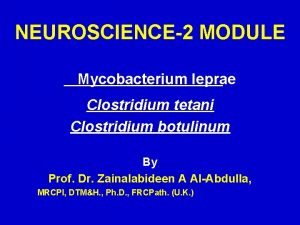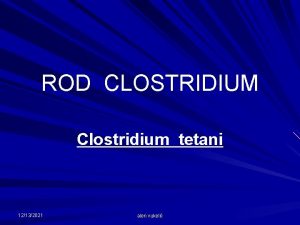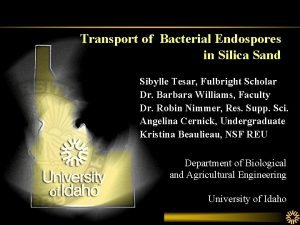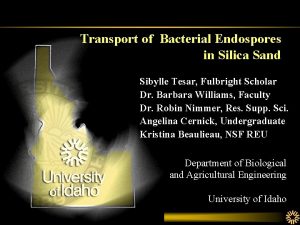Clostridium See Lecture Handouts Spores Clostridium form endospores





























































- Slides: 61


Clostridium

See Lecture Handouts


Spores Ø Clostridium form endospores under adverse environmental conditions Ø Spores are a survival mechanism Ø Spores are characterized on the basis of position, size and shape Ø Most Clostridium spp. , including C. perfringens and C. botulinum, have ovoid subterminal (OST) spores Ø C. tetani have round terminal (RT) spores

Clostridium Associated Human Disease

Clostridium perfringens


Summary of C. perfringens Infections

Micro & Macroscopic C. perfringens NOTE: Large rectangular gram-positive bacilli NOTE: Double zone of hemolysis Inner beta-hemolysis = θ toxin Outer alpha-hemolysis = α toxin

Summary of C. perfringens Infections (cont. )

Clostridial Cellulitis

Minor Major C. perfringens Virulence Factors

Exotoxins Associated with C. perfringens Types A-E Major

C. perfringens Nagler Reaction NOTE: Lecithinase (α-toxin; phospholipase) hydrolyzes phospholipids in egg-yolk agar around streak on right. Antibody against α-toxin inhibits activity around left streak.

Clostridium tetani


Summary of C. tetani Infections

Summary of Clostridium tetani Infections (cont. )

Clostridium tetani Gram Stain NOTE: Round terminal spores give cells a “drumstick” or “tennis racket” appearance.

Clinical Forms of Tetanus

Opisthotonos in Tetanus Patient

Risus Sardonicus in Tetanus Patient

Mechanism of Action of Tetanus Toxin

Clostridium botulinum

Summary of C. botulinum Infections

Summary of C. botulinum Infections (cont. )


Mechanism of Action of Botulinum Toxin

Rates of Isolation of C. botulinum and Botulinum Toxin

Clostridium dificile

Summary of C. dificile Infections

Summary of C. dificile Infections (cont. )

Antibiotic. Associated Colitis Plaque

Antibiotic-Associated Colitis

C. dificile Virulence Factors

Other Clostridium

Virulence Factors Associated with Other Clostridium


REVIEW Clostridium

REVIEW

See Lecture Handouts REVIEW

Spores Ø Clostridium form endospores under adverse environmental conditions Ø Spores are a survival mechanism Ø Spores are characterized on the basis of position, size and shape Ø Most Clostridium spp. , including C. perfringens and C. botulinum, have ovoid subterminal (OST) spores Ø C. tetani have round terminal (RT) spores REVIEW

Review of Clostridium perfringens REVIEW

REVIEW

Micro & Macroscopic C. perfringens NOTE: Large rectangular gram-positive bacilli REVIEW NOTE: Double zone of hemolysis Inner beta-hemolysis = θ toxin Outer alpha-hemolysis = α toxin

Minor Major C. perfringens Virulence Factors REVIEW

Exotoxins Associated with C. perfringens Types A-E Major REVIEW

C. perfringens Nagler Reaction NOTE: Lecithinase (α-toxin; phospholipase) hydrolyzes phospholipids in egg-yolk agar around streak on right. Antibody against α-toxin inhibits activity around left streak. REVIEW

Review of Clostridium tetani

REVIEW

Clostridium tetani Gram Stain NOTE: Round terminal spores give cells a “drumstick” or “tennis racket” appearance. REVIEW

Clinical Forms of Tetanus REVIEW

Mechanism of Action of Tetanus Toxin REVIEW

Review of Clostridium botulinum

REVIEW

Mechanism of Action of Botulinum Toxin REVIEW

Review of Clostridium dificile

Summary of C. dificile Infections REVIEW

Summary of C. dificile Infections (cont. ) REVIEW

 Clostridium spores
Clostridium spores How does moss reproduce
How does moss reproduce Geotropism
Geotropism Spores sexual or asexual
Spores sexual or asexual What are spores
What are spores Fungi kingdom characteristics
Fungi kingdom characteristics Evolution of fungi
Evolution of fungi Ascomycots
Ascomycots Protists and fungi
Protists and fungi 01:640:244 lecture notes - lecture 15: plat, idah, farad
01:640:244 lecture notes - lecture 15: plat, idah, farad Zoo103 handouts pdf
Zoo103 handouts pdf Shaffer paragraph
Shaffer paragraph Sample of handouts
Sample of handouts Handout stichpunkte
Handout stichpunkte Cs408 handouts
Cs408 handouts Cs408 handouts
Cs408 handouts Handouts definition
Handouts definition Student handouts inc
Student handouts inc Studenthandouts.com
Studenthandouts.com Gapped handouts
Gapped handouts Advantages and disadvantages of handouts in teaching
Advantages and disadvantages of handouts in teaching Patient education handout template
Patient education handout template Disadvantages of advertising
Disadvantages of advertising Student handouts inc
Student handouts inc Somatic death
Somatic death Clostridium botulinum reino
Clostridium botulinum reino Clostridium botulinum disease name
Clostridium botulinum disease name Morfologi clostridium perfringens
Morfologi clostridium perfringens Bacilos gram positivos aerobios
Bacilos gram positivos aerobios Clostridium perfringens
Clostridium perfringens Tetanus
Tetanus Cultivo de flujo resultados normales
Cultivo de flujo resultados normales Measles vs chicken pox
Measles vs chicken pox Clostridium tetani
Clostridium tetani Clostridium tetani
Clostridium tetani Granulos de volutina
Granulos de volutina Stately motility
Stately motility Parede celular
Parede celular Clostridium tetani
Clostridium tetani Microbiology
Microbiology Myriam
Myriam Clostridium sporogenes
Clostridium sporogenes Clostridium welchii
Clostridium welchii Target hemolysis clostridium
Target hemolysis clostridium Present continuous interrogative negative
Present continuous interrogative negative Ing form words
Ing form words Project procurement management lecture notes
Project procurement management lecture notes Lecture about sport
Lecture about sport Healthy lifestyle wrap up lecture
Healthy lifestyle wrap up lecture Existential nihilism
Existential nihilism Meaning of this
Meaning of this Randy pausch the last lecture summary
Randy pausch the last lecture summary Tensorflow lecture
Tensorflow lecture Theology proper lecture notes
Theology proper lecture notes Strategic management lecture
Strategic management lecture Geology lecture series
Geology lecture series Social psychology lecture
Social psychology lecture In text citation for a lecture
In text citation for a lecture Public sector accounting lecture notes in uganda
Public sector accounting lecture notes in uganda Software project management handwritten notes pdf
Software project management handwritten notes pdf Eurocode 2 lap length table
Eurocode 2 lap length table Magnetism
Magnetism
